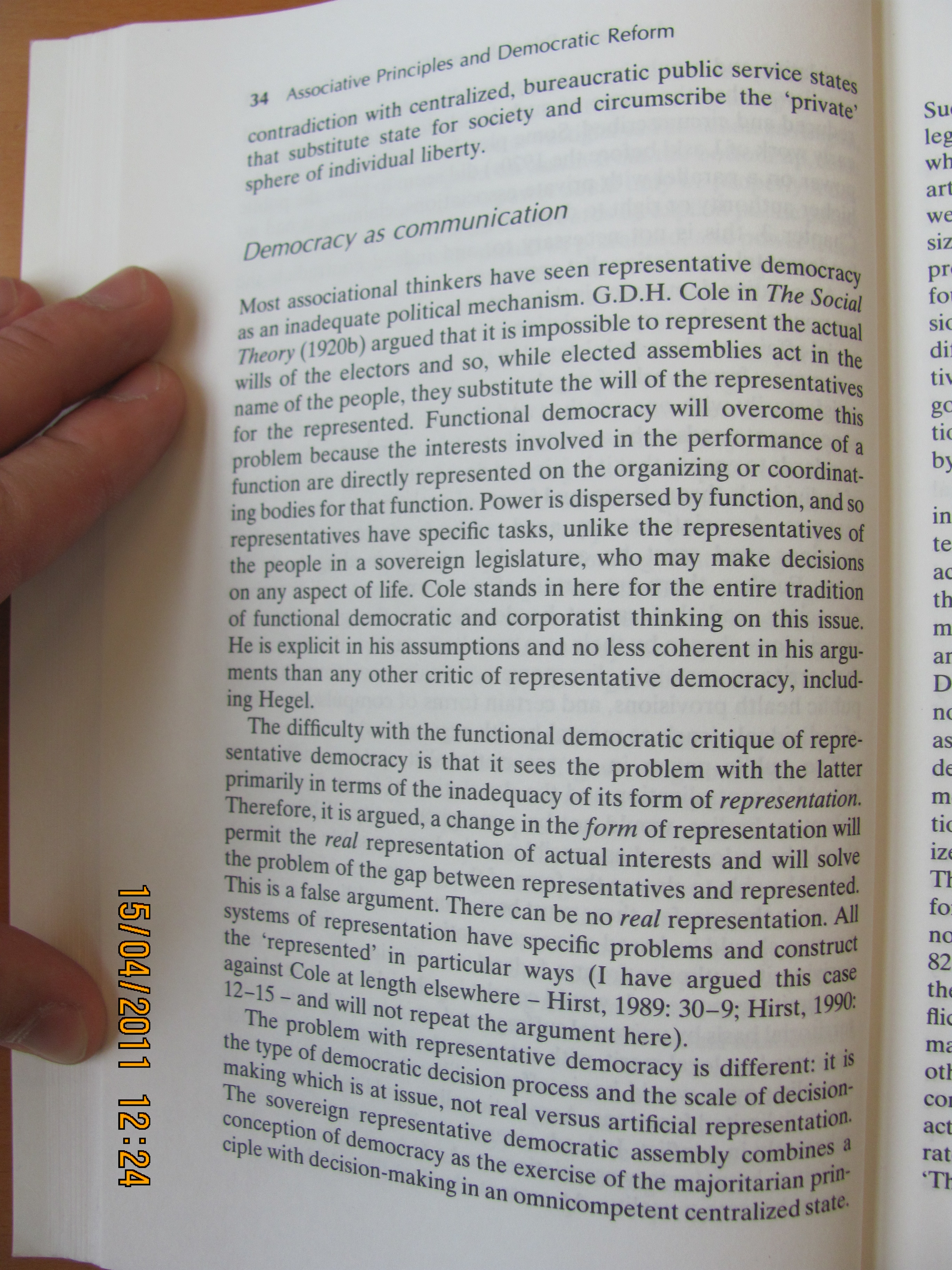82043 IMG#22

34 Associaftve Principles and Democratic Reform
sphere of individual liberty. ^ii M
| J wh
art
Democracy as communication : Jn H
sizj
Most associational thinkers have seen representative democracy I ^
as an inadeąuate political mechanism. G.D.H. Cole in The Social 1 §j(
Theory (1920b) argued that it is impossible to represent the actual | ^
wills of the electors and so, while elected assemblies act in the t;N
name of the people, they substitute the will of the representatives gC
for the represented. Functional democracy will overcome this 1 +J
problem because the interests involved in the performance of a ^
function are directly represented on the organizing or coordinat- i ing bodies for that function. Power is dispersed by function, and so i jn representatives have specific tasks, unlike the representatives of | the people in a sovereign legislature, who may make decisions 1 ac
on any aspect of life. Cole stands in here for the entire tradition 1 th
of functional democratic and corporatist thinking on this issue. 1 m
He is explicit in his assumptions and no less coherent in his argu- I ar
ments than any other critic of representative democracy, includ* 1 D
ing Hegel. [Ę n<
The difficulty with the functional democratic critiąue of repre- I as
sentative democracy is that it sees the problem with the latter 1 de
primarily in terms of the inadequacy of its form of representation. I m
Therefore, it is argued, a change in the form of representation will I tic
permit the real representation of actual interests and will solve 1 iz<
the problem of the gap between representatives and represented. f H
This is a false argument. There can be no real representation. Ali | fo
systems of representation have specific problems and construct I nc
the ‘represented’ in particular ways (I have argued this case against Cole at length elsewhere - Hirst, 1989: 30-9; Hirst, 1990: i ^ 12-15 - and will not repeat the argument here). K
The problem with representative democracy is different: it is the type of democratic decision process and the scalę of decision* cqj making which is at issue, not real versus artificial representation. act The sovereign representative democratic assembly combines a rat conception of democracy as the exercise of the majoritarian prin- 1 ^
cipie with decision-making in an omnicompetent centralized State.
Wyszukiwarka
Podobne podstrony:
IMG#18 30 Associative Principles and Democratic Reform gain the upper hand and impose their view on
IMG#14 26 Associative Principles and Democratic Reform democratic naturę of the ‘primary association
IMG#20 32 Associative Principles and Democratic Reform Laski in ‘The Problem of Administrative Areas
IMG#08 20 Associative Principles and Democratic Reform yoluntary associations in order to do so. Ass
88880 IMG#28 40 Associative Principles and Democratic Reform democracy as communication have the adv
83038 IMG#16 28 Associative Principles and Democratic Reform a pleni tude of power and the right to
IMG#16 28 Associative Principles and Democratic Reform a pleni tude of power and the right to exerci
więcej podobnych podstron